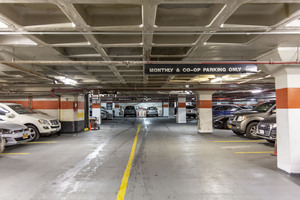 Diligent maintenance practices contribute to the safety of parking structures, compliance with regulations such as NYC's Local Law 126, and an extended lifespan, while minimizing costly repairs.
Diligent maintenance practices contribute to the safety of parking structures, compliance with regulations such as NYC's Local Law 126, and an extended lifespan, while minimizing costly repairs.
Proactive maintenance and preventative measures are essential in maintaining the integrity and safety of parking structures, which are particularly susceptible to aging as a result of heavy vehicle usage; corrosion from moisture and de-icing salts; poor maintenance; as well as freeze-thaw cycles for unenclosed parking structures. By implementing best practices, the lifespan of these facilities can be extended, reducing the need for costly repairs.
To achieve these goals, parking garage owners can adopt the following best practices:
- Prompt Repairs: Address any minor issues, such as cracks, leaks, or damaged protective coatings, as soon as they are identified. Promptly repairing these issues can help prevent more extensive and costly damage in the future.
- Install and Maintain Protective Coatings and Sealants: Surfaces subject to traffic should be coated with appropriate protective materials. Where not coated, a new coating system should be applied. Where a coating system is already in place, regularly inspect and maintain the coating and sealant throughout the structure's surfaces. This can help protect against from water intrusion, chemical exposure, and other environmental factors that can contribute to deterioration.
- Monitor Drainage Systems: Regularly inspect and maintain the drainage system within the parking structure to ensure proper function. Repairing damaged drains and cleaning out clogged drains will prevent water build-up and potential damage to the structure.
- Implement a Routine Inspection Program: Implementation of a routine inspection program to identify and address any emerging maintenance issues between the mandated inspection cycles can help maintain the overall health and safety of the structure.
- Train Staff and Management: Ensure that all staff and management responsible for the operation and maintenance of the parking structure are trained in the proper care and upkeep of the facility. This includes understanding the unique maintenance needs of parking structures and being able to identify potential issues before they escalate.
In locations such as New York State, with the New York State Parking Garage Inspection Rule, and New York City, with its Periodic Inspection of Parking Structures Program (Local Law 126 of 2021), parking structures must adhere to specific state and local laws and regulations. The inspection frequency for parking garages can vary based on these requirements. During an inspection, a Professional Structural Engineer will assess the condition of a parking structure and determine if it complies with regulations regarding permits, health and safety, and building codes, among other requirements. It is the parking garage owner or manager’s responsibility to be aware of these rules and maintain their facility accordingly. The condition assessment provided by a parking garage inspector offers valuable insights into the additional maintenance actions that should be undertaken on an annual basis.
By following these maintenance best practices and staying up-to-date on local and state regulations, parking garage owners and managers can ensure their facilities remain safe, functional, and well-maintained. Proactively investing in the proper care of parking structures yields long-term benefits by averting expensive repair campaigns, safeguarding the value and longevity of the facilities, and fostering a safe, secure environment for patrons, employees, and the broader community.
